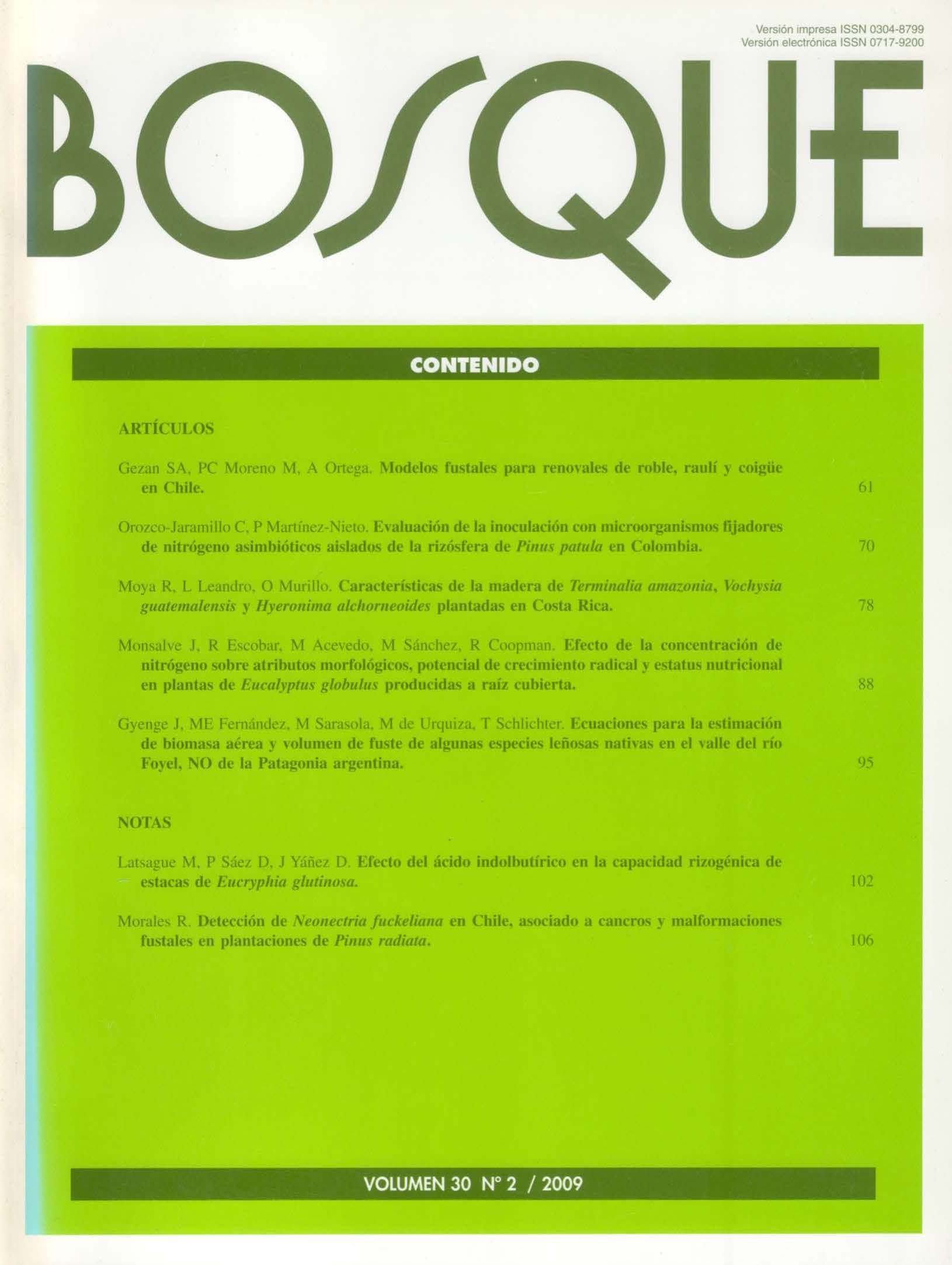Main Article Content
Aug 31, 2009
Abstract
A total of ten individual tree taper models were fitted to felled raulí (Nothofagus alpina), roble (N. obliqua) and coigüe (N. dombeyi) trees, corresponding to total of 558 individuals (251, 180 and 127, respectively). They were selected from 108 sample plots of pure or mixed roble-raulí-coigüe second growth forests located between 36° and 42° S latitude in Chile. The taper models and a volume model were fitted to 12 fitting groups; these were defined according to the combinations of growth zone and specie together with three general groups representing each species. In all groups, the best taper models allowed to describe the profile with error values smaller than 15% in the estimation of the without bark section diameter. In all cases, the precision and bias in the volume predictions using taper models were similar to the individual volume model. At a general level, small differences among the best models were found with better results for Bruce and Kozak models where the latter showed slightly better performance.


